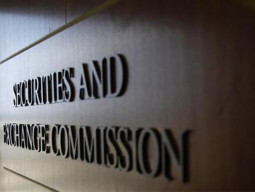
As the Water and Power Development Authority (Wapda) pays more attention to the Dasu hydropower project, thereby putting the Diamer Bhasha Dam on the backburner, international loan commitments worth $9 billion for the latter are in jeopardy.
Multilateral and bilateral donors including the Asian Development Bank (ADB) had agreed to lend $9 billion for the 4,500-megawatt Diamer Bhasha Dam despite intense lobbying by India to block donor financing.
According to officials, Wapda’s focus on the 4,300MW Dasu hydropower project caused problems in generating funds for Bhasha Dam. Now financiers are seeking a firm commitment from the government that it will accord top priority to Bhasha Dam.

Officials said the government had firmed up a plan for arranging $14 billion from domestic and foreign sources for Bhasha Dam. However, the World Bank asked Pakistan to seek a no-objection certificate from India before starting work on the dam. Nevertheless, other donors like the ADB agreed to provide the funds.
Later, the World Bank refused financing for Bhasha Dam and offered $500 million for the Dasu project, which also encouraged Wapda to shift focus to the latter.
The Dasu hydropower project is quite expensive and unfeasible compared to the Bhasha Dam. Water and power ministry officials told The Express Tribune that the total construction cost of Bhasha Dam would be $10 billion and $4 billion would be added on account of Interest During Construction (IDC).
Dasu project, however, will comprise four tunnels and the cost of each tunnel will be $6 billion excluding the IDC. Dasu dam will generate six billion units of electricity in a year compared to production of 18 billion units by Bhasha Dam.
“If Bhasha Dam is built, then Dasu’s production will jump from six to 14 billion units, whereas production by other dams like Tarbela, Chashma and Ghazi Barotha will go up 10%,” an official said.
According to reports, the Indian lobby in Washington has been actively campaigning to create hurdles in the way of Bhasha Dam, asking the US and other lenders to link their assistance with a no-objection certificate. New Delhi claims that the dam is being built in the disputed territory of Gilgit-Baltistan.
Unveiling a 10-year financing plan for Bhasha Dam, sources told The Express Tribune that $5 billion would be generated from domestic sources whereas $9 billion would be borrowed from international lenders.
Arrangements have been finalised with the ADB, which will extend $4 billion with the assurance that more can be provided if the need arises.
The other major donor will be the US Agency for International Development, which has pledged $2 billion over eight years – $250 million per year. “This financing is part of US strategy to cooperate with Pakistan in overcoming the energy crisis,” an official of the Ministry of Water and Power said.
Another $2 billion will be raised from different countries including Japan on the basis of supplier’s credit. In the programme, they will provide equipment and machinery for constructing the dam and payment for these will start after 10 years. The Islamic Development Bank (IDB) and other Middle Eastern lenders will lend $1 billion.
Besides tapping these foreign sources, the government will generate $2 billion by securitising assets of dams like Tarbela, Mangla and Ghazi Barotha and issuing Sukuk (Islamic bonds). A sum of $1b will be allocated from hydel receipts.
The government will also release $1 billion from the Public Sector Development Programme to implement the project. It has already released Rs25 billion and plans to collect $1 billion by imposing a surcharge of 10 paisa per unit on power consumers.
Published in The Express Tribune, July 5th, 2013.
Like Business on Facebook, follow @TribuneBiz on Twitter to stay informed and join in the conversation.



















COMMENTS
Comments are moderated and generally will be posted if they are on-topic and not abusive.
For more information, please see our Comments FAQ